Congratulations on taking the first step toward starting your Music blog! Music blogging is a great way to share your passion for music with the world, and can also be a lucrative way to make money online.
In this guide, we will cover everything you need to know about how to start a music blog & make money online in 2024, including how to choose your blog’s niche, create a music blog in WordPress and write a blog post optimized for search engines. Then I will show you how to promote your music blog to get traffic along with how to monetize your music blog to make money.
By the end of this guide, you will be able to build a successful music blog from scratch.
If you have any questions along the way, just drop a comment and I will help you out.
So let us jump right in.
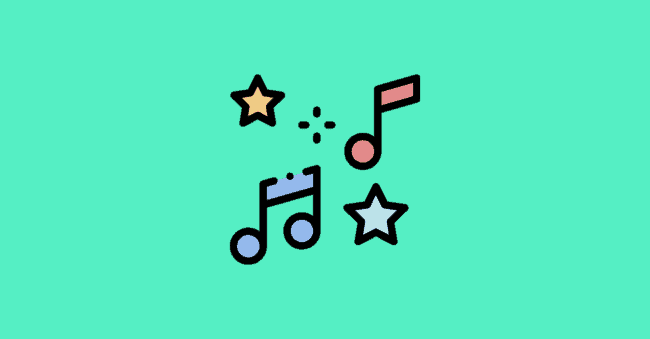
How to Start a Music Blog in 7 Steps
- Define Your Music Blogging Goals
- Choose a Music Niche
- Pick & Register a Blog Domain Name
- Setup WordPress
- Write & Publish Blog Posts
- Promote Your Music Blog
- Monetize & Make Money
1. Define Your Music Blogging Goals
The first step in starting a Music blog is to define your goals.
Why do you want to start a Music blog?
- Are you looking to build an audience around your music?
- Or are you looking to make money from your blog?
- Do you have some other goal for your blog?
Your answer to these questions will determine the steps you need to take to make your blog a success.
You can have more than one goal. But being clear about what your goal is, will help you decide how to brand your blog and what posts you write about.
What is a Music Blog?
A music blog is a blog about music and can include guides on how to sing or play a musical instrument, reviews of artists and albums, news about bands and artists, and information on musical events.
Why Start a Music Blog?
There are many reasons to start a music blog.
Here are some benefits of starting a music blog:
- Build an audience of music lovers who appreciate your taste in music.
- Share your knowledge and passion for music with the world.
- Help other people discover new music.
- Make money from your blog by selling advertising, promoting products, or selling your own music.
Whatever your reason, starting a music blog is a great way to connect with other music lovers and make money online.
How much money can you make from music blogging?
The amount of money you can make from your music blog will depend on how much traffic your blog gets. A music blog with 100,000 page views per month will make $2815 per month from advertising. Your income potential will be higher if you have more blog posts.
2. Choose a Music Niche
Now that you know why you want to start a music blog, it is time to choose a niche.
Your niche will be the focus of your blog and will determine the topics you write about, the products you promote, and the audience you attract.
Why choose a niche?
A niche blog is more likely to be successful than a general interest blog because it appeals to a specific group of people who are interested in that topic.
It is easier to build an audience around a specific topic than a general one.
And it is easier to make money from a niche blog because you can promote products that are relevant to your audience.
Finding Your Ideal Niche
Here are some factors to consider when choosing your music niche:
- What type of music genre do you like? (Folk Music, Electronic Music, Hip Hop, Indie Music, etc).
- What type of music do you know the most about?
- What type of music is most popular right now?
- What type of music do you think is underserved? (Local Music).
- What type of music do you think is missing from the current conversation?
Usually, your niche will boil down to what music you are good at or interested in.
Examples of Music Blog
Sometimes looking at other music sites will help inspire ideas of your own. Here are some of the more successful music blogs:
1. Guitar World
This blog covers articles lessons, reviews, and a buyer’s guide along with news about guitarists and music bands.

2. Piano Dreamers
This blog is a resource for people who want to learn how to play the piano. It includes buying guides, reviews, and tips for beginner and intermediate players.

3. Two Story Melody
This is a songwriting blog. It covers news, reviews, and interviews with artists in the genre.
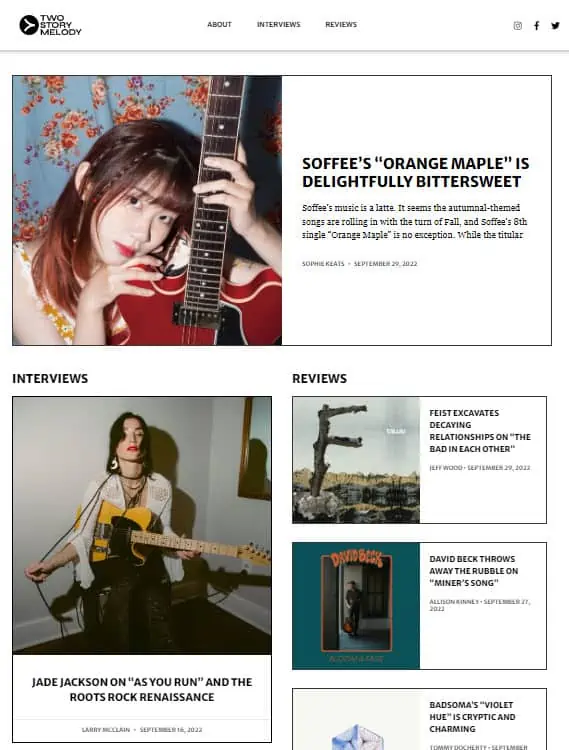
4. Pitch Fork
This blog covers news and reviews for all things indie music. It has expansive coverage of indie rock, hip-hop, electronic, pop, metal, and experimental music.

5. Metal Injection
The blog is focused on metal music. It covers news, music videos, and tour dates for metal music bands.

Check if Your Niche Is Profitable
Certain music niches are more profitable than others and have a higher return on investment on your time.
For example, if you are teaching people how to play an instrument like a guitar, you can sell courses, and be an affiliate for guitar-related products and music gear apart from showing advertising on your blog.
If you have a news website on the other hand, you are much more limited on how you can monetize because your audience is not interested in buying courses or affiliate products. You will be limited to monetizing with ads.
News gets old very quickly which means you need to be constantly creating content to generate traffic. If on the other hand, you teach people how to play an instrument or create their own music, your content will be evergreen and will generate traffic for years.
3. Pick & Register a Blog Domain Name
Once you have chosen your niche, it is time to brainstorm a few names for your music blog.
We recommend you keep your music blog’s name to two words (Example: Minimalist Baker). One of the two words should be a keyword from your niche. The other word can be something that makes your website brandable. For example, our blog teaches people how to make passive income, so we have named it Passive Book.
Here are some of the words that you can mix and match into your blog name:
- Melody
- Tunes
- Pro
- Rockstar
- Addict
- Critic
- Junkie
- Freak
- Fanatic
- Lover
- Headbanger
- Maestro
Use a Business Name Generator to brainstorm the name of your blog.
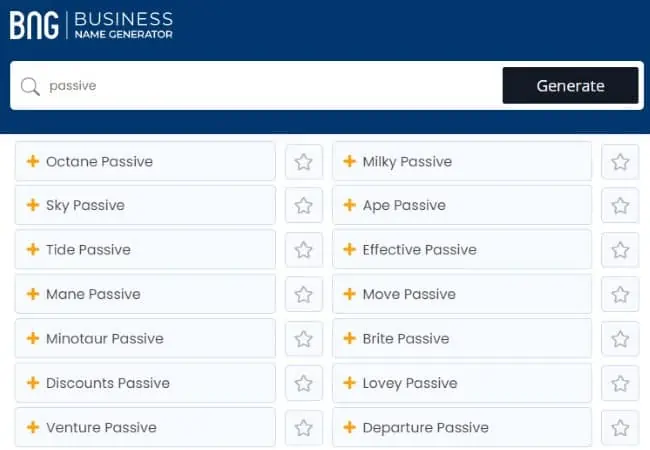
You can also use your own name for your blog. But if you ever plan to sell your website in the future, it is much more difficult to transfer your brand to the buyer when it is your name.
Check Domain Name Availability
After you have brainstormed a few names for your Music blog, you should check if the .com domain name is available.
A domain name is the web address for your blog. It is the name that people will type into their web browser to visit your blog.
You must check if both the .com domain name and the social media handles are available. You can use Namechk to check the availability of both your domain name and social media handles.
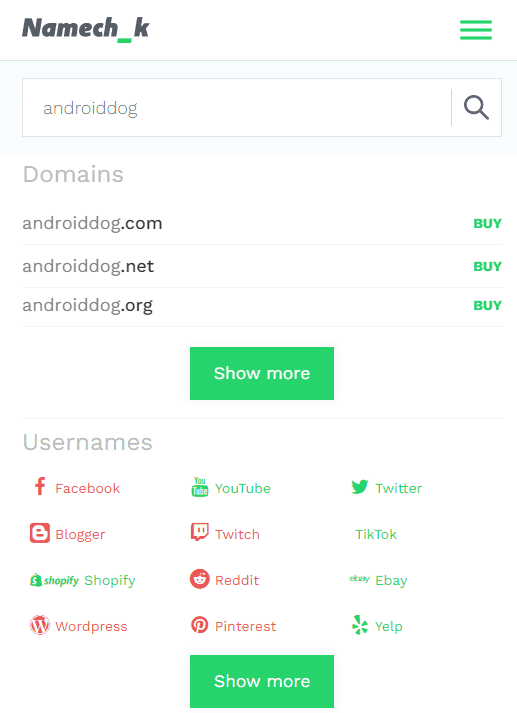
Here are a few things to keep in mind when selecting a domain name:
- Choose a .com domain name. 86% of the internet uses .com, so your visitors are likely to try visiting your blog by typing .com. Avoid other extensions like .net or .org.
- Don’t include hyphens and numbers.
- Do not use words with multiple spellings (for example colour vs color).
- Shorter domain names are better. Try to keep it under 12 characters.
- Spelling & Pronunciation should be easy and intuitive.
- It should be easy to remember.
- Avoid words that can be misread together. For example, therapistjohn.com can be read as Therapist John or The Rapist John.
- Make sure it’s not trademarked or copyrighted by someone else. The AI writing software Jarvis.ai had to rebrand to Jasper.ai because Marvel sued them for the Iron Man reference. Lawsuits will happen once your blog is established.

Register a Domain Name
Once you decide your domain name it is time to register it.
You should register your domain with NameCheap because you will get domain privacy for free. Other providers charge $12 per year for domain privacy. Without domain privacy, your name, home & email address will be accessible to the public.
Step 1: Go to NameCheap. Enter your domain name with the .com extension.
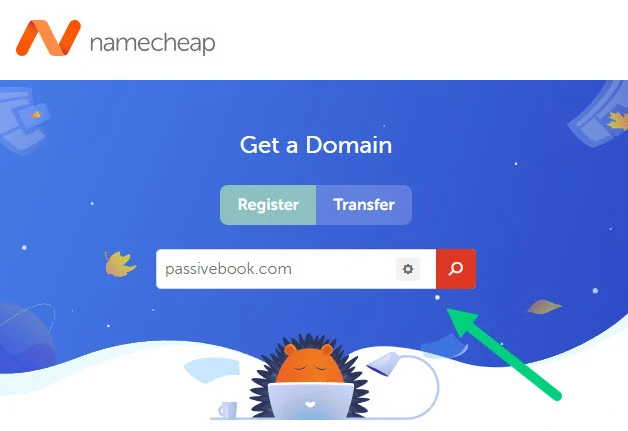
Step 2: Select the .com extension and click the Add to Cart button.
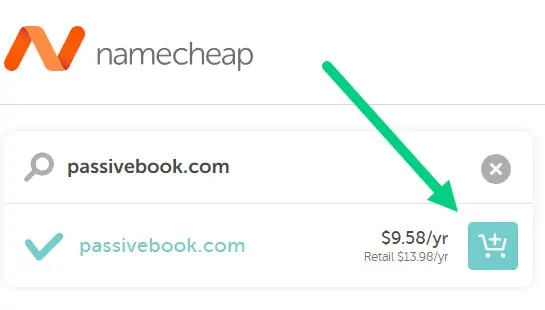
Step 3: After adding the domain to the cart, click on the Checkout button.

Step 4: Enable Domain Privacy that comes for free along with auto-renew. You don’t need any other paid addon.

Step 5: Click on Confirm Order. Pay to complete your purchase.
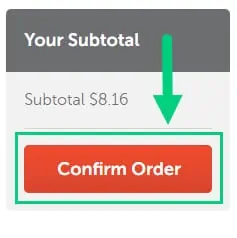
Step 6: Log in to Namecheap and click on Domain List ❶ in the left sidebar and then click Manage ❷ next to the domain you just purchased.
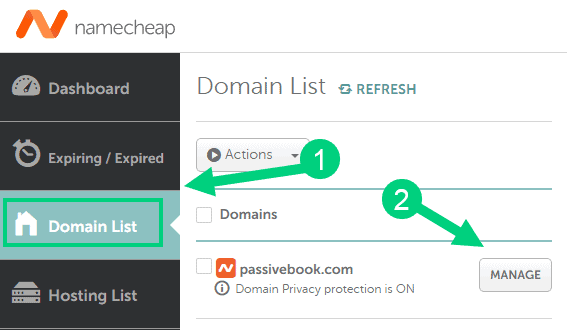
Step 7: Under the Nameservers section, select “Custom DNS” from the dropdown ❶. Then enter the following two nameservers ❷ ns1.bluehost.com and ns2.bluehost.com as shown in the image. Then click the green tick ❸ to save. If you use a hosting provider other than Bluehost, enter their nameserver values in this step instead.
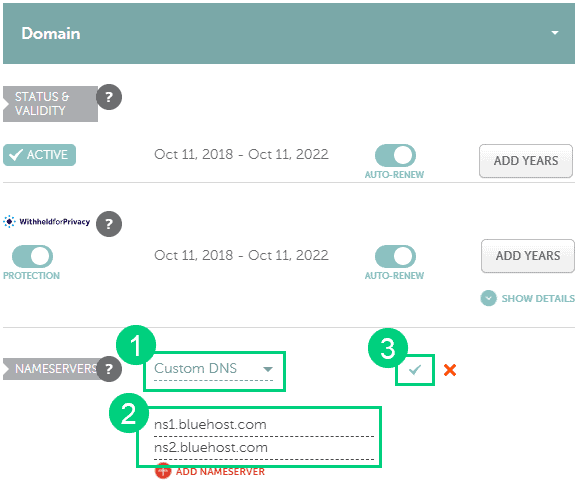
Can I get a free domain name?
Your web hosting provider might give you a free domain name for one year but they charge $12 for domain privacy which is free in Namecheap. From the second year, you will pay for both the domain and privacy which will cost you more than $20+. So it is cheaper to just register your domain with Namecheap from the beginning. Also using different companies for web hosting and domain registration will allow you to easily switch your blog host later without transferring domains.
Can I change the name of my blog later?
You will lose your search engine rankings if you change your blog’s name once it gets links from other websites. It will take as long as a year or more for you to regain the lost traffic. It is possible to mitigate problems by having proper redirects. But you will have to renew both your old and new domains every year. So try to avoid changing your blog’s name once it is established.
4. Setup WordPress
The next step is to get your blog up and running in WordPress.
WordPress is a Content Management System (CMS) that enables you to create a blog without having to write code. It is super easy to use, even for beginners.
Why Choose WordPress.org?
There are many blogging platforms but the self-hosted wordpress.org powers 70% of blogs on the internet. 42% of all websites on the internet use WordPress.

Here are some reasons to use WordPress.org:
- It is free and open source.
- You own your data.
- You don’t have to worry about censorship.
- It is highly customizable with themes and plugins.
- It has a large community of developers who constantly improve the software.
- It is used by major brands like Sony Music.
WordPress.org vs WordPress.com
There are two types of WordPress: WordPress.com and WordPress.org.
WordPress.com is a hosted platform that enables you to create a blog for free but with some limitations. You don’t own your data. Ads will be displayed on your blog and you don’t get to keep 100% of the ad revenue. You cannot install plugins, or themes or use a custom domain without spending a lot of money.
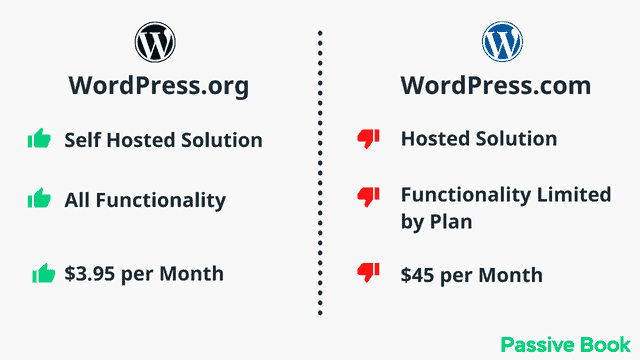
WordPress.org is a self-hosted platform. You will need to get your own hosting but you get to keep 100% of the ad revenue. You also own your data. You have complete control to install plugins and themes. WordPress.org is what we recommend for starting a music blog.
Why Avoid Free Blogging Platforms
There are many free blogging platforms like Blogger, Tumblr, Medium, and WordPress.com. But we recommend avoiding them for the following reasons:
- It is difficult to monetize. Ads may get shown on your blog but you won’t get to keep any of the money.
- Websites like Blogger, Tumblr, and WordPress.com don’t rank in the search engines.
- You don’t own your data. Your blog can get deleted without any option to recover it.

How much does it cost to start a blog?

It will cost you $2.95 per month to host your WordPress blog in Bluehost. A domain will cost you $12/year. So that is a total of $4.2 per month, which is less than the price of Netflix for all the unlimited features that a self-hosted WordPress blog has to offer.
What to do if you already have a free blog?
You can use a free import plugin to transfer your blog from a free platform to WordPress without losing your traffic or search engine rankings.
Install WordPress in Hosting
The first step to installing WordPress is to buy hosting.
Hosting is a service that stores your blog files on a server. This way, people can access your blog from anywhere in the world. When you buy hosting, you are renting space on a server where your website files will be stored.
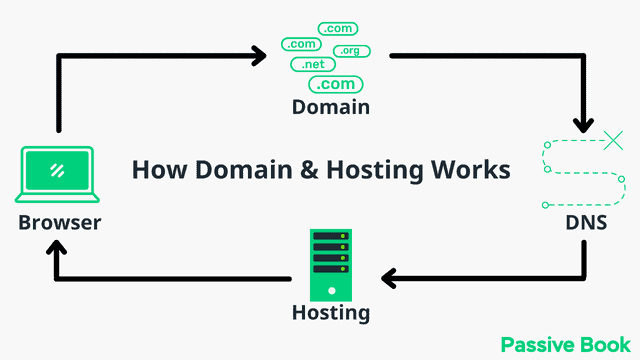
For this guide, we will use BlueHost as our web host. It is a cheap hosting that is extremely easy for beginners to set up. If you use any other web host, the steps will be the same but the user interface may be slightly different.
1. Go to BlueHost using this link to get a special discount. Select WordPress > WordPress Hosting from the top menu.
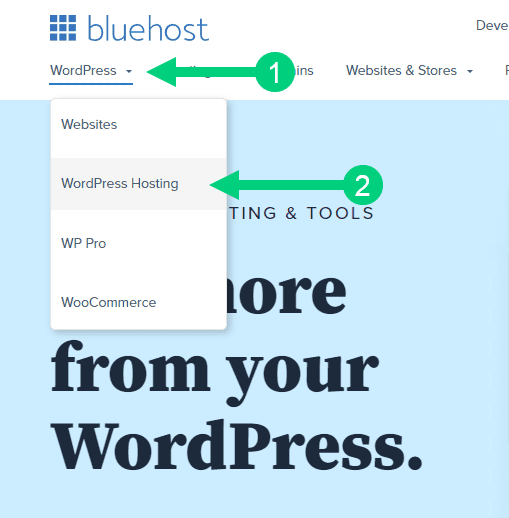
2. Click on the button you see on this page and you will be taken to the pricing section.

3. Select the Basic Plan. You can upgrade to a different hosting plan as you grow.
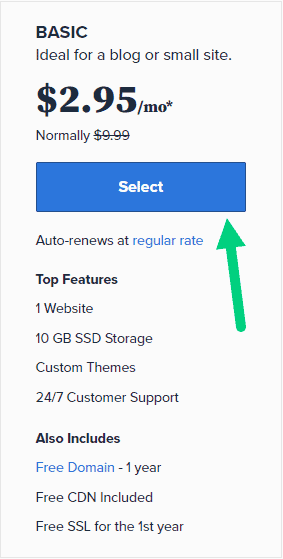
4. If you already have a domain name that you purchased with Namecheap you can put that in the “Use a domain you own” ❶ section. If you don’t have a domain name yet, choose the “Create a New Domain” ❷ to purchase a new domain.
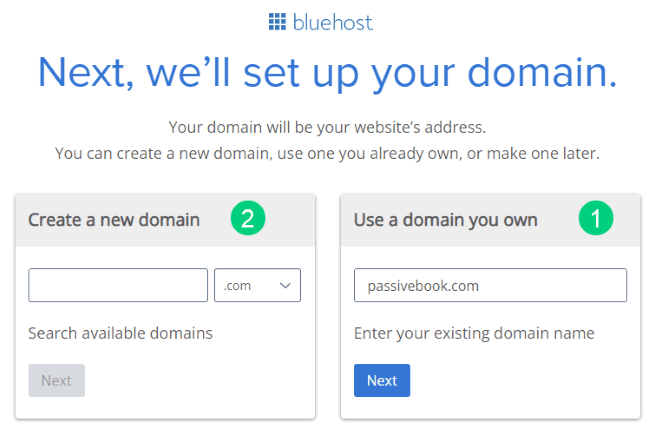
5. In the next screen, enter your information. Uncheck all package extras. If you purchase your domain through Bluehost instead of Namecheap, you may want to enable Domain Privacy. You won’t see the Domain Privacy option if you bought your domain through Namecheap. Namecheap will give you this Domain Privacy for free.
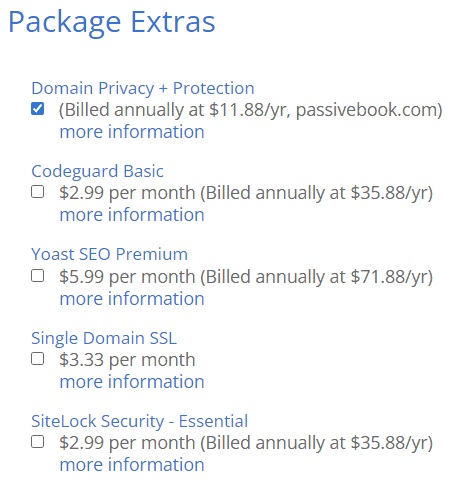
6. Once you have successfully paid, you will be prompted to set a password. Click on the “Create your Password” button.
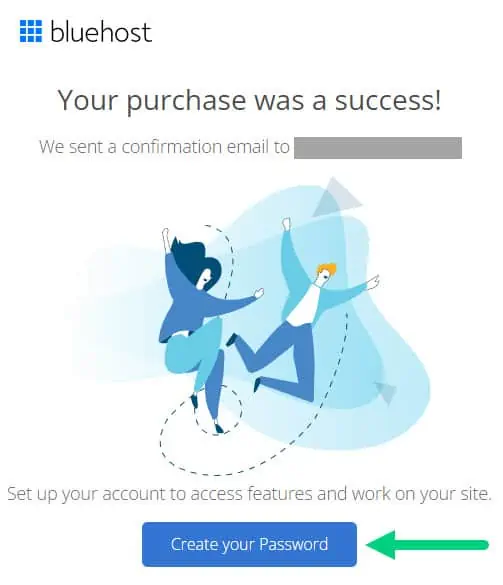
7. Enter your password and create your account. If you lose this password, you can reset it.

8. After you set your password, log in to Bluehost.
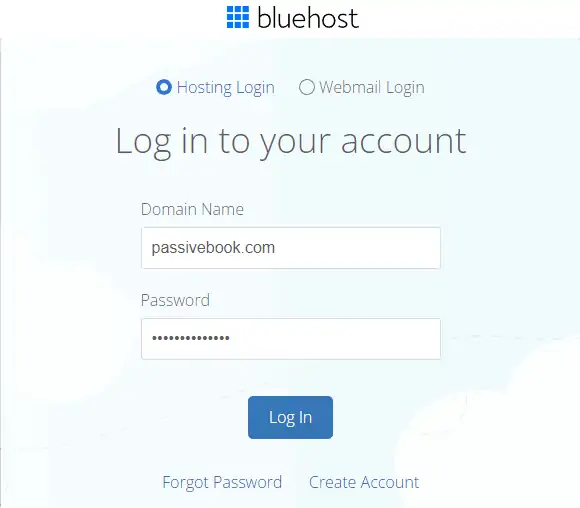
9. Click on the Create your website button on the following screen. This will start a Bluehost Wizard, just click Skip this step wherever possible.

10. On the following page, click “No help needed” or “Skip this step”. We don’t want Bluehost to limit our customization options.
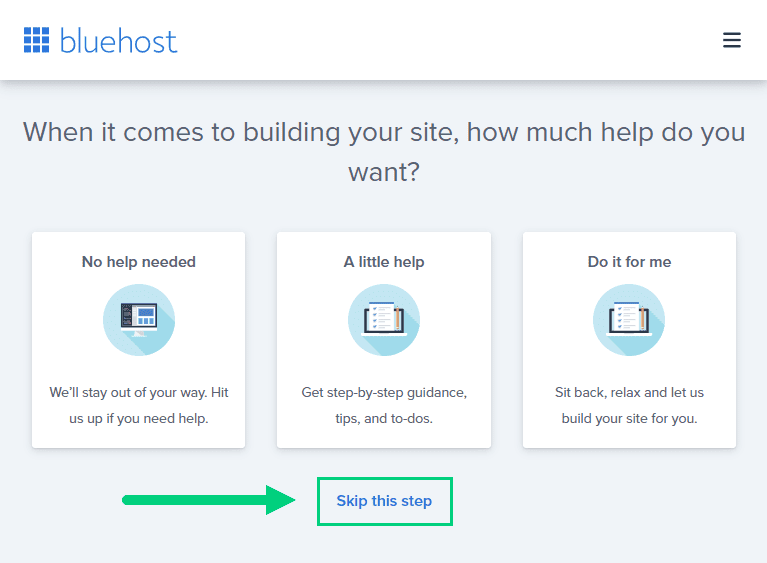
11. On the next page, you will be asked about the purpose of your website. You can choose from any of the available options.
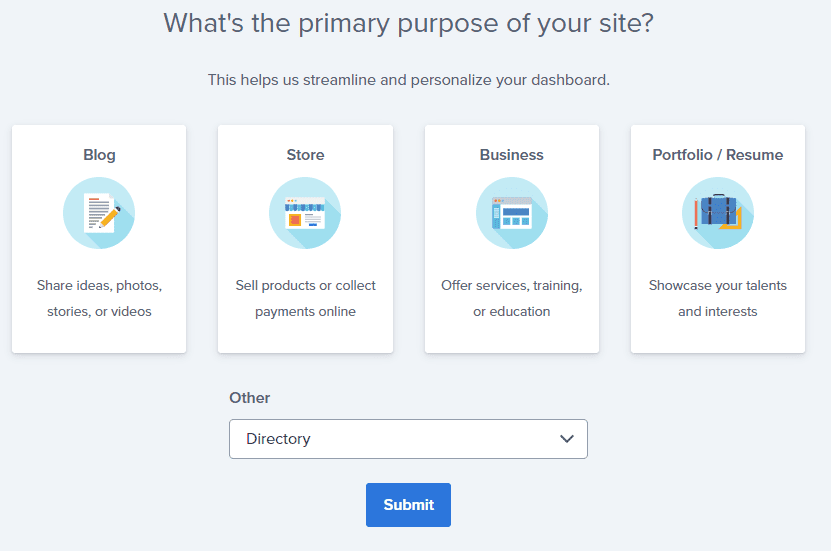
12. On the next page, click Skip this step.

13. On the following page, enter the blog’s name and tagline. You can change this later so feel free to click “Skip this step” or enter something as a placeholder and click Continue.
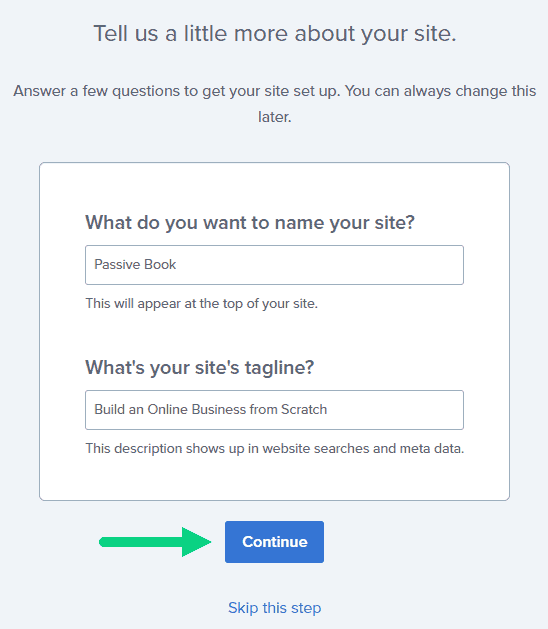
14. Finally you will be asked how you want to build your website. Choose “Limitless customization” to have all the options.
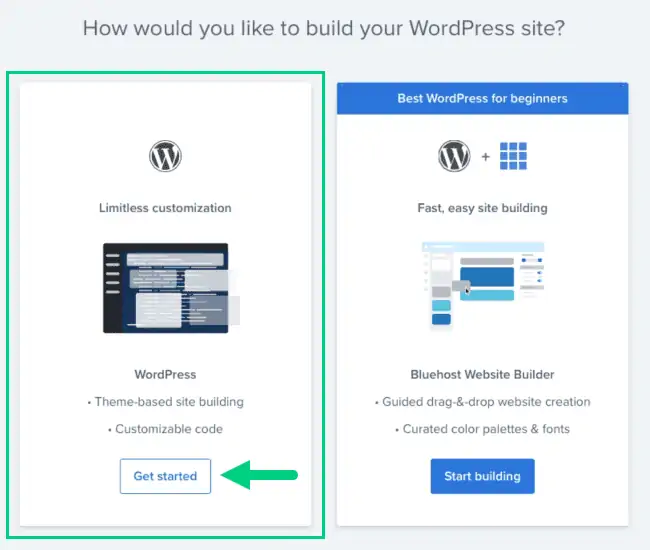
15. You can see your blog by going to yourdomain.com. Go to the Bluehost dashboard and click on the My Sites tab ❶ in the left sidebar and click on the “Manage site” button ❷.

16. Your WordPress site has separate login credentials different from the ones you use to log into Bluehost. You can use this to log in to the WordPress dashboard directly without logging into Bluehost. To get this:
❶ Click on Users on top.
❷ You will be able to see your username and email that you can use to log in to WordPress.
❸ If you click on the three dots you will see the option to Reset your password. ❹
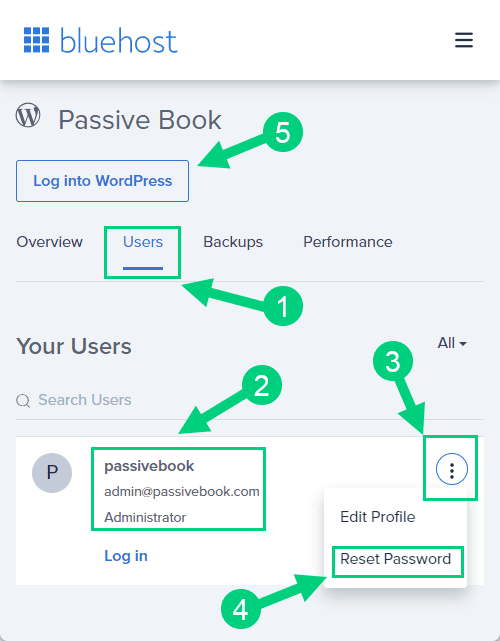
You can log into WordPress from the Bluehost dashboard by clicking the Log in to WordPress button ❺. But it is not recommended you rely on this as your primary login method because you will get locked out of your site if you ever change hosting providers.
17. You will be taken to the WordPress dashboard where you can reset your password ❶. If you don’t like the username Bluehost created for you, you can Add a New User ❷.

18. If you are adding a new user make sure you specify the user role as Administrator ❶. You can log in as the new user and safely delete the default user created by Bluehost.
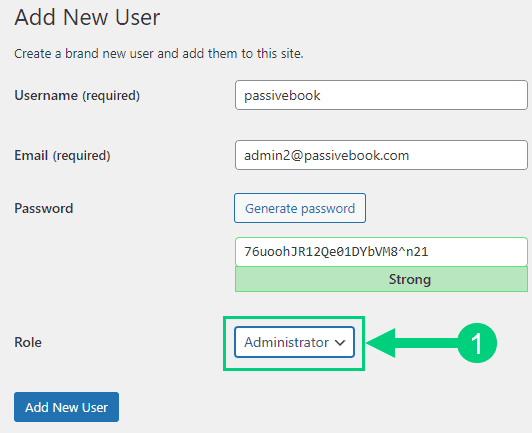
Congratulations! You have successfully set up WordPress.
Configure WordPress
Now that you have the basic version of WordPress installed, it is time to customize it to make it look and feel the way you want.
Login to WordPress Dashboard
Visit yourdomain.com/wp-admin to access the WordPress dashboard.

The WordPress dashboard is the main area where you will control your blog. It includes the following sections:
- Posts – This is where you will write and publish your blog posts.
- Pages – This is where you will create static pages for your blog.
- Appearance – This is where you will change the look and feel of your blog.
Use the Email and Password you provided during installation to log in to your WordPress dashboard. If you don’t have a password, use the “Lost your password?” to generate a new password.
Install WP Themes
A WordPress Theme is a collection of files that tells WordPress how your blog should look and function.
Your new WordPress blog will be installed with a default blog theme that doesn’t look very great.
To install a new WordPress Theme:
Go to Appearance > Themes > Add New in your WordPress dashboard.
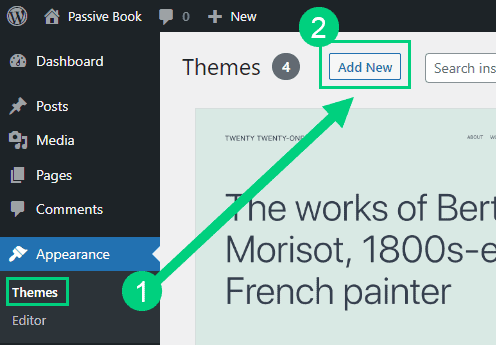
Use the search to find a theme that you like ❶. Before you install the theme, you can see a demo of the theme and learn about its features from the preview screen ❷. If you like the theme, you can install it by clicking the install button ❸. You can also upload a theme from a file on your computer ❹.
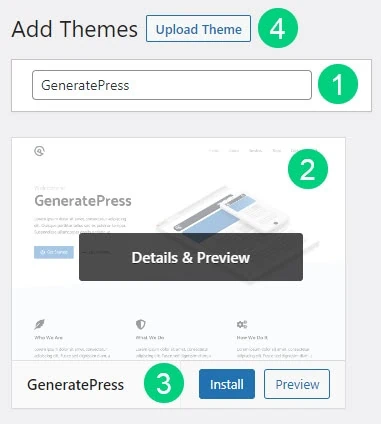
Once installed, click the Activate button to enable the theme.
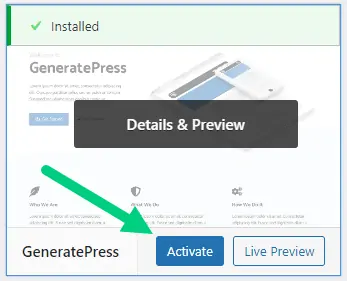
Although you can use a free theme (there are thousands of free themes available), we recommend using a premium theme.
Premium themes not only reduce your website’s load time but also help you customize your website to your heart’s desire.
Here are the premium themes we recommend:
There are also several themes custom-made for music blogs. These themes tend to be bloated with poor code which will slow down the performance of your website. We suggest getting one of our recommended themes for a fast website with unlimited customization possibilities.
Install WP Plugins
A WordPress Plugin adds features or functionality to WordPress. There are over 55,000 free WordPress plugins available to download from the WordPress Plugin Directory.
Too many wordpress plugins can slow down your blog site. So before you install new plugins, it will be worth clearing out any existing plugins that your hosting provider installed by default.
Plugins first need to be deactivated before they can be deleted.
❶ Go to WP Admin > Plugins > Installed Plugins
❷ Click on the checkbox to select all plugins.
❸ Select Deactivate from the drop-down.
❹ Click Apply.
❺ Repeat the above steps but select “Delete” instead of “Deactivate” from the dropdown in ❸ to delete all the deactivated plugins.
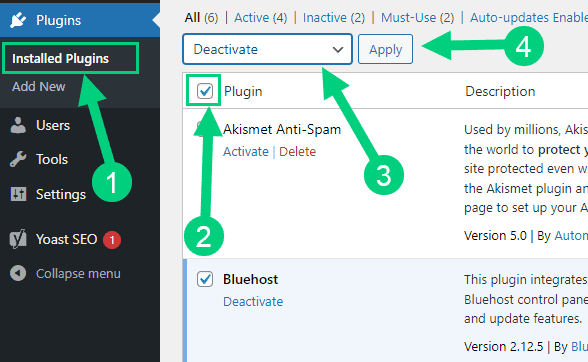
To install new plugins go to the WP Admin > Plugins > Add New.

On the plugins page:
❶ Search for the plugin you want in the search bar
❷ Click Install Now. Once you install the plugin, you must also activate the plugin for it to be enabled.
❸ If you are installing a paid plugin you can upload the plugin instead.

There are many different plugins that you can install, but here are the ones which we recommend:
Backup Plugin: A WordPress Backup Plugin helps you create backup copies of your website. This way, if something goes wrong with your website, you can restore it to its previous state.
Recommended Plugin: WPVivid (paid) or UpdraftPlus (free).
SEO Plugin: A WordPress SEO Plugin helps improve your website’s search engine rankings. It does this by optimizing your website for search engines, adding metadata to your website, and improving your website’s readability.
Recommended Plugin: RankMath (paid).
Google Analytics Plugin: A WordPress Analytics Plugin helps you track the number of visits your website receives, where your website’s visitors are coming from, and what pages they are visiting on your website. This way, you can track the effectiveness of your website’s marketing campaigns and make necessary changes to improve your website’s
Recommended Plugin: RankMath (paid) or GA Google Analytics (free).
Cache Plugin: A WordPress Cache Plugin speeds up your website by caching your website’s pages and posts. When someone visits your website, they will not have to wait for your website to generate the page they are looking for. Instead, they will be served a cached version of the page.
Recommended Plugin: WP Rocket (paid).
Page Builder Plugin: A WordPress Page Builder Plugin helps you create custom pages for your website. With a page builder plugin, you can create pages without knowing how to code. You can also create pages that look different from the standard WordPress template.
Recommended Plugin: Thrive Architect (paid).
Security Plugin: A WordPress Security Plugin protects your website from hackers and malware. It does this by adding security features to your website, such as two-factor authentication and malware scanning.
Recommended Plugin: Wordfence (free).
Social Media Plugin: A WordPress Social Share Plugin helps you share your website’s content on social media platforms, such as Facebook, Twitter, and Instagram. It does this by adding social media buttons to your website’s pages and posts.
Recommended Plugin: Easy Social Share Buttons (paid).
Music Player Plugins: A WordPress Music Player Plugin lets you add a music player to your website. With a music player plugin, you can play music on your website, create playlists, and sell music.
Recommended Plugin: Gutenberg Audio Block (No Plugin Required).
Audio Selling Plugins: A WordPress Audio Selling Plugin allows you to sell music on your website. With an audio-selling plugin, you can sell digital music files, physical CDs, and vinyl records. Some plugins let you truncate the audio so that your listeners can hear a portion of the audio for free and then they can purchase the full audio if they like what they hear.
Recommended Plugin: Music Player for WooCommerce (free).
Customize WordPress
Once you have installed your theme and plugins, it is time to customize the wordpress blog platform:
Change Colors, Fonts & Spacing
You can set the font, colors, and spacing by going to Appearance > Customize in your WordPress dashboard. Premium themes like GeneratePress allow you to customize every aspect of your blog.
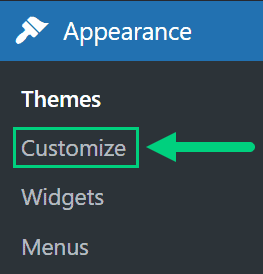
Check out our Blog Fonts & Typography guide to choose the right font and typography settings for your blog.
Add Your Logo
Get a logo designed for your blog from Fiverr. Then set the logo of your blog by going to Appearance > Customize in your WordPress dashboard. A logo is not required for a successful blog but it can definitely help appeal to your target audience.

Change Favicon
Favicon is the image that appears in the browser tab and bookmarks. Set the Favicon from the Appearance > Customize section of the WordPress dashboard.

Create Menus
The header and the footer menu can be set from the Appearance > Menus in your WordPress blog dashboard.

You can nest menu items so that it appears as a dropdown menu ❶. You can use the menu as your primary or secondary navigation menu ❷. Don’t forget to save your menu ❸.
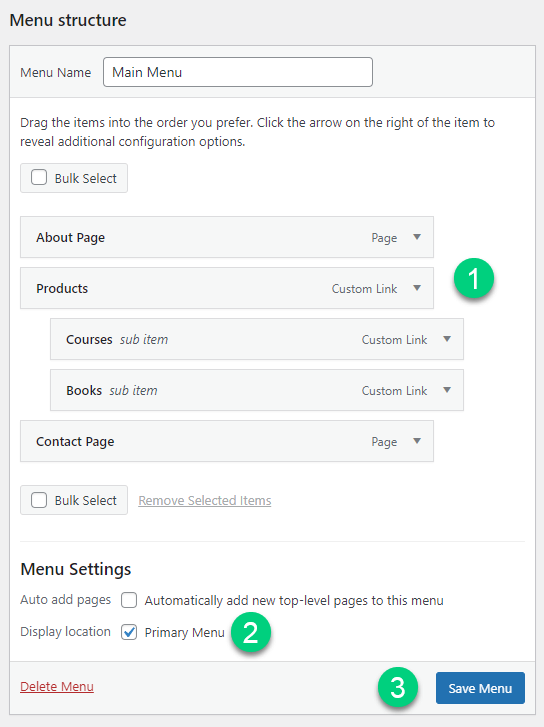
Create Widgets
If you have a sidebar, you can add widgets to it. Go to Appearance > Widgets in your WordPress admin dashboard.
Check out the list of the most useful Blog Widgets and how to add them to your blog.
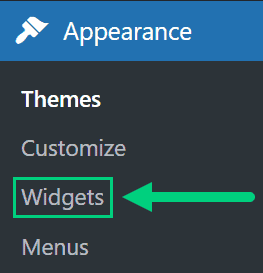
Set Title & Tag Line
The next step is to change your General Settings. Go to Settings > General in the WordPress Admin area.
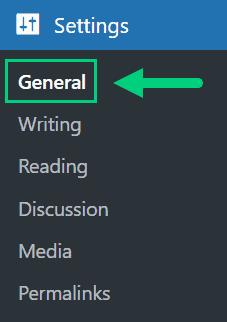
You can set your Site Title, Tagline, and Time Zone from this screen.
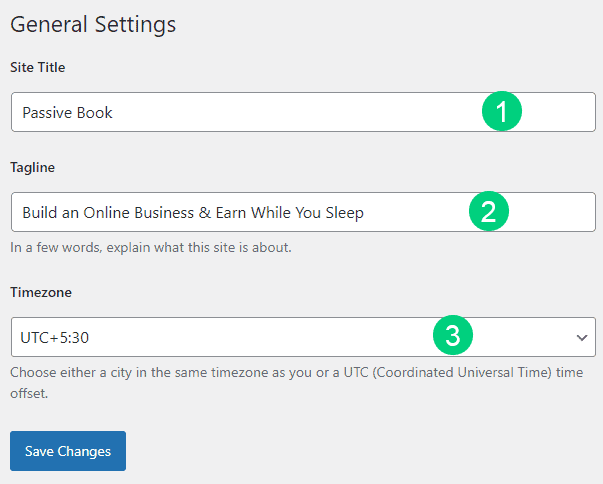
Set Permalinks
The ideal URL structure for SEO is yourdomain.com/sample-post. Set your permalink structure by going to Settings > Permalinks in your WordPress blog dashboard.
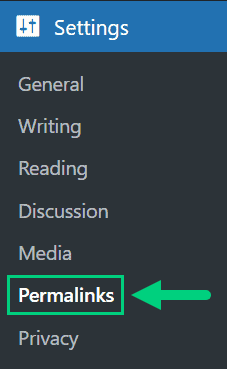
Select the “Post name” radio button and save changes.
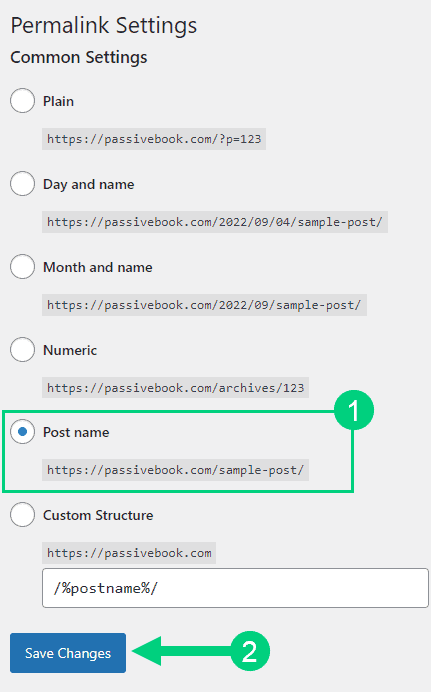
Enable Search Visibility
Chances are you want your blog to show up on Google so people can find you. Go to Settings > Reading in your WordPress dashboard.

To get search engine traffic, ensure the checkbox “Disable search engines from indexing this site” is Unchecked. You can find this option in Settings > Reading. Most of the time this should be unchecked by default but if it is not, then uncheck it to ensure your site gets traffic from search engines.
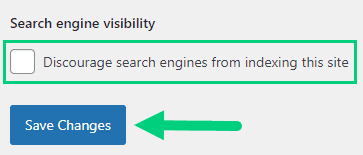
Adjust Comment Settings
Next, you will want to change the Discussion Setting (aka Comments). Go to Settings > Discussion in your WordPress admin area.
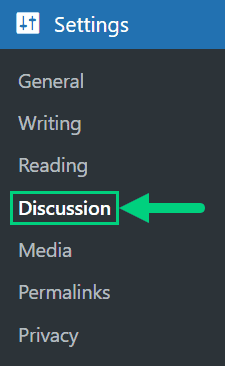
❶ You may want to enable or disable comments on this page. You can also disable pingbacks and enable comment moderation.
❷ You can also set comment approval settings.

If you want to design your blog further, check out our dedicated guide on blog design which has all our best blog design recommendations.
Create Static Pages
There are a few essential pages that you need to create for your Music blog before you can start blogging.
Use pages in WordPress to add static content. Go to WP Dashboard > Pages > Add New.
- Write the headline of your content.
- Populate the body content
- Click the publish button.
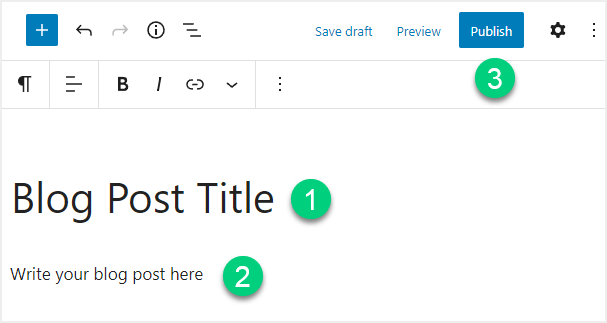
You may want to create the following pages:
Home Page
A home page is the main page of your website. It is the first page that your visitors see when they visit your website. The home page typically contains a summary of your website’s content, a list of your latest blog posts, and a selection of your website’s most popular pages.

You can create a professional home page for your Music blog using a page builder like Thrive Architect.
About Page
An about page is a page that tells your visitors who you are and what your website is about. The About page is a great place to tell your story and give your visitors a glimpse into who you are as a person. You can also use your About page to link to your social media profiles.

Contact Page
A contact page is a page that allows your visitors to get in touch with you. It typically contains a contact form and your contact information, such as your email address and phone number.
Use contact form plugins like Fluent Forms to create the form on your contact page.
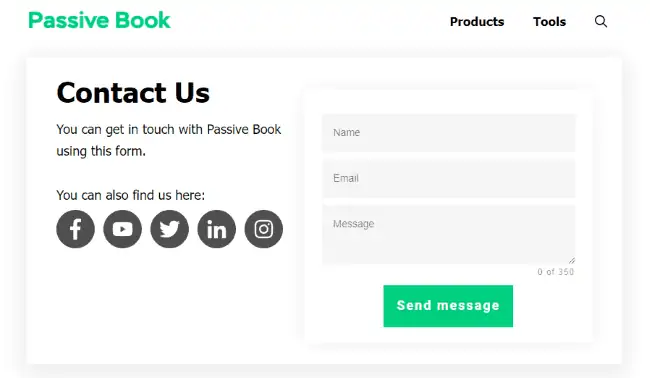
Privacy Policy
A privacy policy page is a page that tells your visitors how you collect, use, and disclose their personal information. You are required to have a privacy policy page if you collect any personal information from your visitors, such as their name, email address, or phone number.
WordPress generates its own privacy policy for you. But you can also use a tool like Termly to generate your own privacy policy.
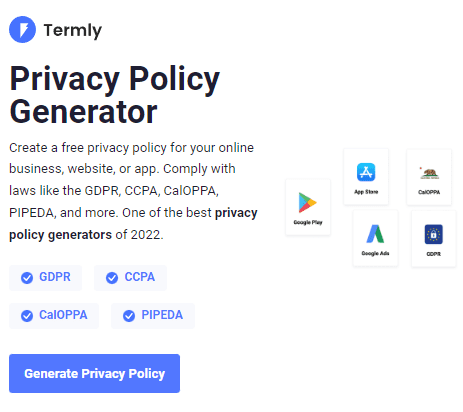
Terms of Service
A terms of service page is a page that sets forth the rules and regulations that your visitors must agree to, to use your website. It is also known as a terms of use page or an agreement page. You must have a terms of service page if you sell products or services on your blog.
Use a terms & conditions generator like Termly to create it.
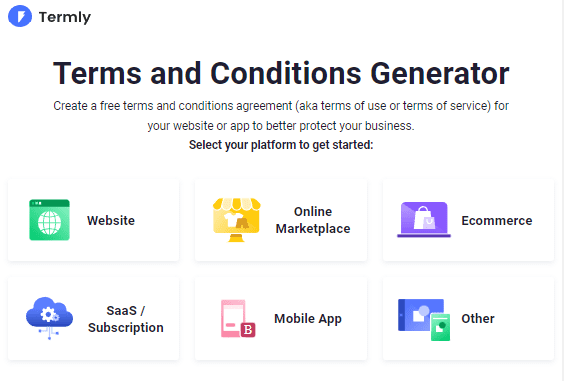
5. Write & Publish Blog Posts
Now that you have your Music blog set up, it’s time to start writing and publishing blog posts. This is where the fun begins!
1. Brainstorm Topics
You should brainstorm 100 topic ideas for your music blog. This will ensure that you always have content to write about in your music blog.
The goal is to find topics for your music blog that your audience is searching for on Google. The type of content you write on your music blog will depend on your specific niche. You can potentially cover the following topics on your music blog:
- Music Tips
- Music Gadget & Equipment Reviews
- Buying Guides
- How to Guides
- Artist Interviews
- Musical Event News
- Music Festival Coverage
There are a few ways to brainstorm specific content:
Look at Competitors
To find content ideas for your music blog, you can look at your competitor’s websites and see what content they are publishing that is resonating with their audience. You can just google your keyword to find competitors in your niche.
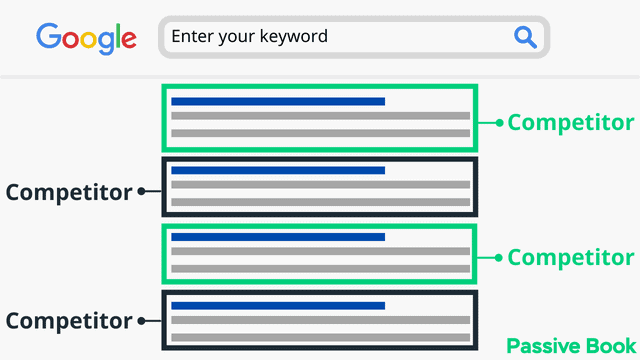
Do Keyword Research
You can plug in your keyword into a keyword research tool like KeywordTool.io to find a list of keywords.
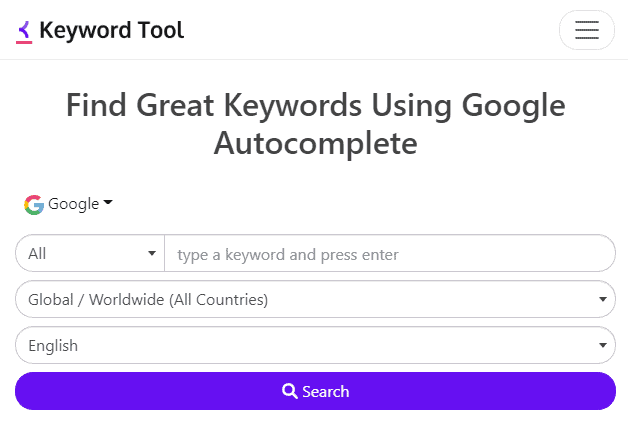
You can also use Google related searches to find content ideas. Just enter your keyword into Google and scroll down to the bottom of the results page where you will see a list of related searches
Community & Forums
Another great way to find content ideas is to look in relevant forums and communities for your niche. You can find forums by googling your keyword + forum.
You can also find communities in Facebook Groups and Reddit.
2. Create an Editorial Calendar
Once you have a list of topics, it’s time to start creating an editorial calendar. This will help you plan and publish your content regularly.
An editorial calendar is a planning tool that helps you organize your content and publish it regularly. By using an editorial calendar, you can ensure that your Music blog always has fresh content to attract and engage your audience.
Some of the benefits of using an editorial calendar are:
- It helps you plan and publish your content
- It helps you stay organized
- It helps you track your progress
- It helps you measure your success
Your editorial calendar should include the following information for each blog post:
- Title
- Publish Date
- Target keyword
- Word count
- Status
Download Content Calendar Template
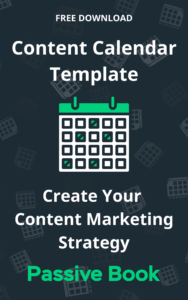
Steal our exclusive content calendar template. Have it delivered directly to your inbox:
There are a few different ways to create an editorial calendar. You can use a Google Spreadsheet, Excel, or a tool like Trello.
3. Write a Blog Post
Now that you have your topics and editorial calendar all planned out, it’s time to start writing your blog post. We have an in-depth guide on How to Write A Blog Post. Here we will go over specific tips for a music blog.
How-To Posts
A How-To post is a type of blog post that provides step-by-step instructions or guidance on a specific topic. These types of posts are designed to help readers learn a new skill or accomplish a task.
Some examples of How-To post titles include:
- “How to record and mix your own music”
- “Creating a music website”
- “DIY guitar maintenance”.
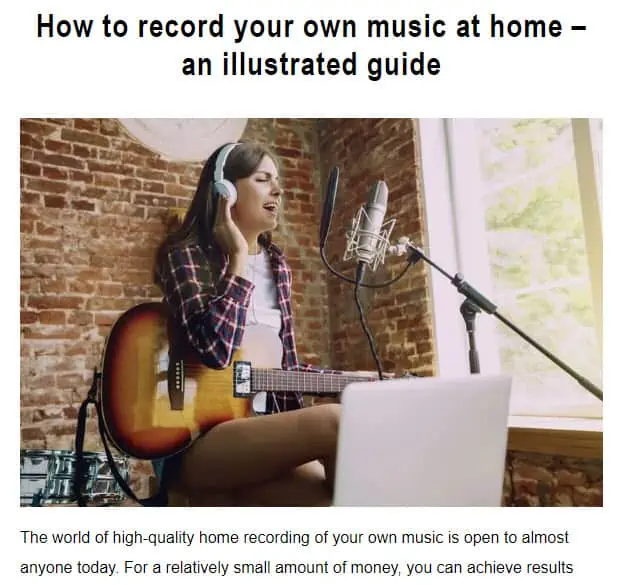
When writing a How-To post, it’s important to be clear, concise, and detailed in your instructions. Break the process into small, manageable steps, and use bullet points or numbered lists to make the information easy to follow. Also, use images or videos to supplement the text and make the instructions more visually appealing.
It’s also important to consider your audience and adjust the level of detail accordingly. If you’re writing for beginners, it’s important to provide basic explanations and keep the language simple. If you’re writing for more advanced readers, you can include more technical information and provide more in-depth explanations. Additionally, you can include tips, warnings, and best practices to guide your readers and make the process more manageable.
Music Tips
Irrespective of the type of music niche you choose, there are going to be tips that you can write in your blog.
Music Tips posts are designed to provide readers with practical advice and insights on various aspects of music. These can include tips on playing an instrument, singing, songwriting, music production, and more.
Some examples of Music Tips post titles include:
- 5 Tips for improving your guitar playing
- Tips to Choose the Perfect Music System for Your Home
- Tips to Be a Better Singer in karaoke bars
- The secrets of a great mix
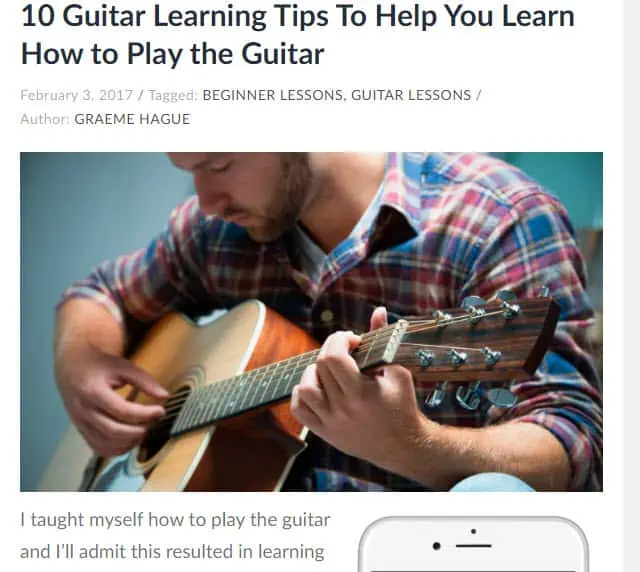
When writing Music Tips posts, it’s important to be clear and concise in your advice. Provide specific examples and practical steps that readers can follow to improve their skills. It’s also helpful to include personal anecdotes or stories to illustrate your points and make the post more relatable. Additionally, you can include links or resources that readers can use to further their education on the topic.
Reviewing Music Gadgets & Equipment
Another type of blog post you can write is reviews. As a music blogger, you will have the opportunity to review all sorts of different gadgets and equipment. You could write reviews on anything from musical instruments to sound systems.
Some examples of Review post titles include:
- “Product review: [Product Name]”
- “Our thoughts on [Product Name]”
- “Is [Product Name] worth buying?”
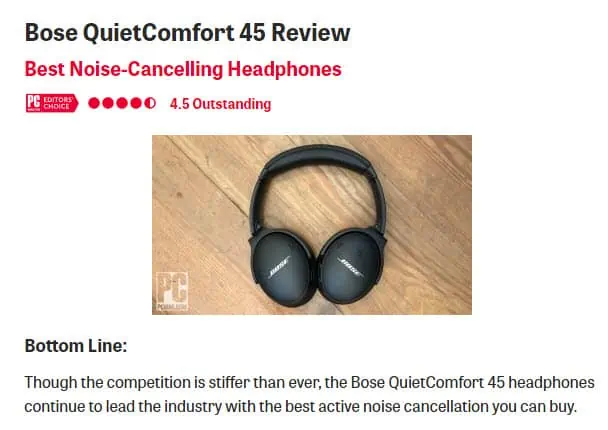
When writing reviews for gadgets and equipment it’s important to be honest and objective in your assessment of the product. Take note of the product as a whole rather than just individual features. In addition, it is important to consider the context of the product, like the price and the competition. Cite examples of specific features that stood out to you. It’s also worth considering the product’s quality, such as construction, durability, and customer support.
Make sure you include your affiliate links so you earn commission on any sales that are made after reading your review.
When you’re writing a review post it’s also important to provide a good balance of positive and negative criticism. Highlight the best and worst parts of the product and explain why you think so. It can be helpful to include a brief summary at the end of your review, giving a quick overview of the product for readers who may not have time to read the entire post. Use relevant language and technical terms so that readers who are familiar with the product or industry can also understand and relate to your points.
Buying Guides
If you are reviewing different types of musical gadgets and equipment, you can also write buying guides to help your readers make informed decisions when they are ready to purchase.
A buying guide post is a type of blog post that provides readers with information and recommendations on a particular product or category of products related to music. These posts are designed to help readers make an informed decision when purchasing a product.
Some examples of Buying Guide post titles include:
- “The best beginner guitars for under $500”
- “A guide to buying a digital piano”
- “Choosing the right microphone for your home studio”
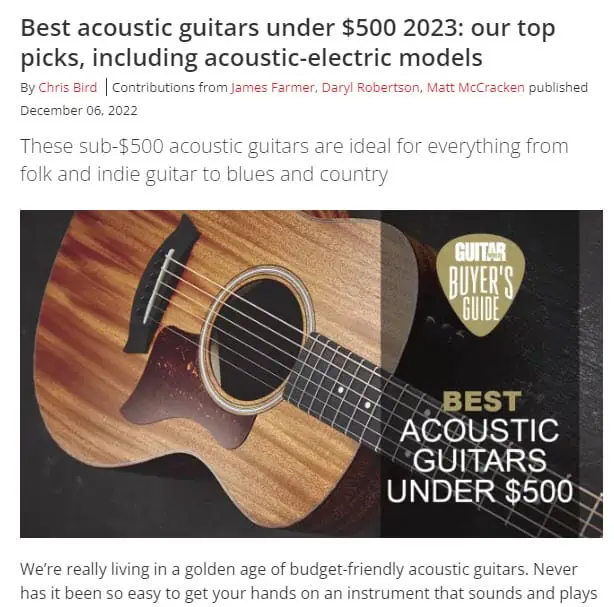
When writing a Buying Guide post, it’s important to provide a comprehensive overview of the products in question. This includes listing the key features and specifications of the products, as well as their pros and cons.
It’s also important to consider the needs and budget of the target audience and provide recommendations accordingly. It can be helpful to include customer reviews or ratings to provide additional perspectives on the products.
When writing a buying guide post, it’s important to be objective and not overly influenced by any particular brand or product. Provide a thorough comparison of different products and their features, be transparent about any potential biases, and disclose any affiliate links or sponsored content.
It’s also important to keep the post updated with the latest available products and prices to ensure that the information is accurate and relevant for your readers. Don’t forget to include your affiliate links.
Interviews
One of the most popular types of blog posts in the music niche is artist interviews. This is where you interview a musician, band, or industry professional and ask them about their lives, their music, and their experiences.
Some examples of interview blog post titles include:
- “Interview with [Musician/Band Member/Industry Professional Name]”
- “Conversation with [Musician/Band Member/Industry Professional Name] on [Album Name]”

When conducting an interview you need to make sure that you:
- Prepare a list of questions in advance.
- Try to ask questions that will elicit interesting and insightful responses, rather than simply asking the interviewee to rehash information that can already be found elsewhere.
- Conduct the interview over email, so you have a written record of the conversation.
- If you are doing an in-person interview, try to create a relaxed and conversational atmosphere during the interview to put the interviewee at ease and encourage them to open up.
- Include images and videos to make the interview more interesting.
- Make sure you promote the interview once it’s published while also asking the artist to promote your interview with their audience.
Album Reviews or Music Reviews
If you love to listen to music you can provide your thoughts and opinions on a recently released album or songs. This post will focus on the overall sound, production, lyrics, and meaning of an album.
Some examples of album review blog post titles include:
- “Album Review: [Album Name] by [Artist Name]”
- “Our thoughts on [Artist Name]’s latest release [Album Name]”
- “Is [Album Name] worth a listen?”

When writing an album review, it’s important, to be honest and objective in your assessment of the album. Take note of the album as a whole rather than just individual songs. It is important to consider the context of the album, like the artist’s past work and their place in the music industry.
Try to provide specific examples from the album to support your points and cite examples of specific tracks or moments that stood out to you. It’s also worth considering the album’s production, such as mixing, mastering, and production quality.
When you’re writing an album review it’s also important to provide a good balance of positive and negative criticism. Highlight the best and worst parts of the album and explain why you think so.
Music Theory Analysis
Music theory analysis is where you explore the technical and compositional elements of a particular song or album.
Some examples of music theory analysis blog post titles include:
- “The chord progression of [song name]”
- “An analysis of [artist name]’s use of dissonance in [album name]”
- “Exploring the use of counterpoint in [song name]”
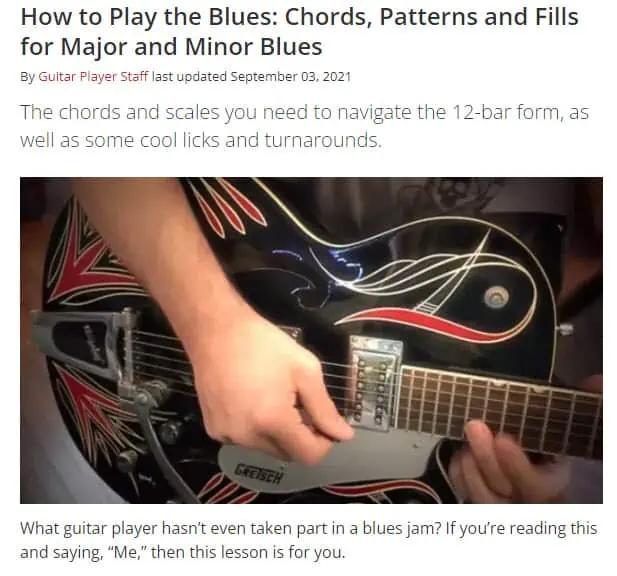
When writing a music theory analysis post, it’s important to have a good understanding of music theory and the concepts you’re discussing. It’s also important to provide specific examples from the song or album to support your points. Also, try to make the post accessible to readers who may not have a strong background in music theory by providing explanations and examples of the concepts you’re discussing.
Music Technology
A music technology blog post is where you write about the latest advancements in music technology and their impact on the industry.
Some examples of Music technology blog post titles include:
- “The future of music production: Artificial intelligence”
- “Virtual Reality in live music performances”
- “How streaming services are changing the music industry”

When writing about music technology, it’s important to stay informed about the latest developments and trends in the field. Research the topic thoroughly and provide specific examples and case studies to support your points. It can also be helpful to include interviews with industry professionals or experts to provide additional perspectives and insights. Additionally, try to provide context and analysis to help your readers understand how the technology is impacting the music industry and what potential implications it may have for the future.
Write 5x Faster With AI
You can write your new blog post at 5x speed using the AI writing software Jasper. I was able to write over a hundred blog articles in 3 months using Jasper. This blog article you are reading right now was written with the help of Jasper. AI will not only help you write blog posts fast but also with higher quality.
Jasper can write plagiarism-free blog content, articles, social media content, emails, and ad copy. All you have to do is provide a few inputs on what you want and Jasper will do all the hard work of creating the blog content for you. No more writer’s block.
Check out the video below to see Jasper in action:
Try Jasper for free using the links on this page and get 10,000 bonus credits you can use to start writing your first articles.
Once you sign up for Jasper I recommend you spend some time going through the tutorial videos in the Jasper Bootcamp to truly unlock the power of this amazing software.
Check out our guide on How to Write a Blog Post Fast in 15 mins Without Losing Quality for more tips to write fast.
Outsource Writing
If you don’t have the time or skills to write blog posts yourself, you can always outsource the writing to a freelancer or agency.
When looking for someone to write for your music blog, make sure that they:
- Have experience writing about music
- Understand your target audience
- Can write in the style that you want
- Can meet your deadlines
There are many sites where you can find freelance writers, such as Upwork and Fiverr.
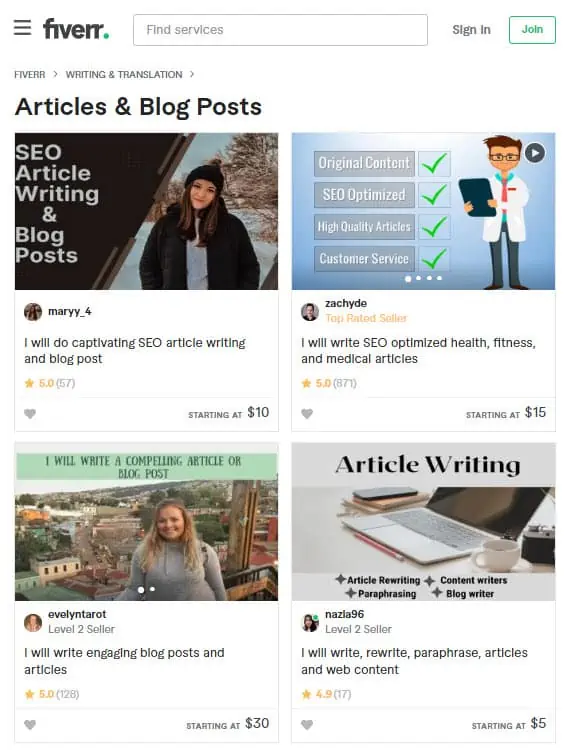
4. Add Images
No matter what type of blog post you are writing, you should always include images and videos.
Images and videos help to break up the text and make your blog posts more visually appealing. They also help to illustrate your points and make your content easier to understand.
You can use your smartphone camera to capture original images and videos.
You can also use a stock photography website to find your images:
Free Options: Pixabay, Pexels, Upsplash
Paid Options: Deposit Photos, Shutterstock, iStock, Getty Images, 123rf.
Use an editing tool like Canva to edit your images. If you get Canva Pro, you will not need a separate stock photography website because you will have a large library of free images.
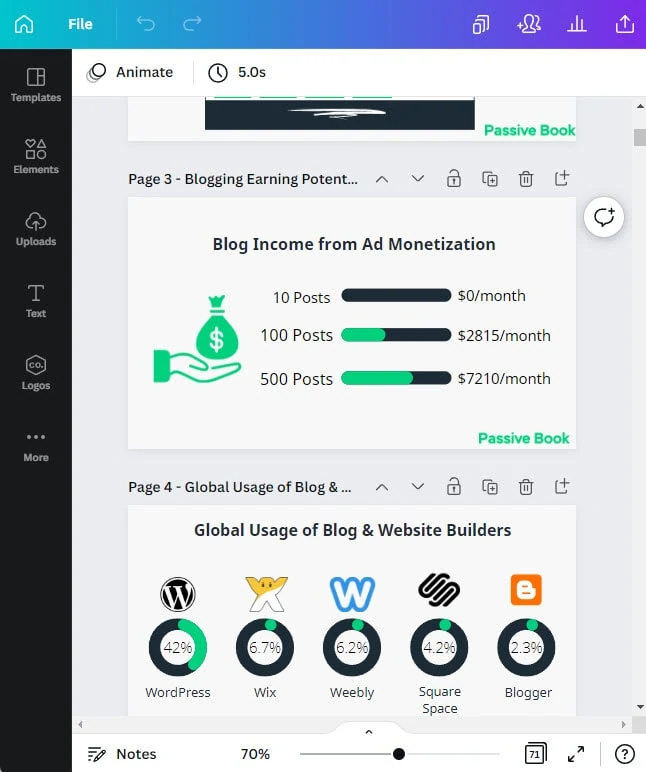
6. Promote Your Music Blog
Once you have written and published your blog post, it’s time to start promoting it to get blog visitors.
There are several different ways that you can promote your blog post:
Search Engine Optimization (SEO)
Once you have written your blog post, it’s time to optimize it for SEO.
SEO is short for “search engine optimization”. It is the process of optimizing your web content to make it rank higher in search engine results pages (SERPs).
Many factors go into SEO, and it can be a bit confusing to figure out where to start. You can master the more advanced SEO tactics by checking out our SEO Resources.

You can ensure you get the basics of SEO right, by completing the recommendations given by the RankMath plugin.
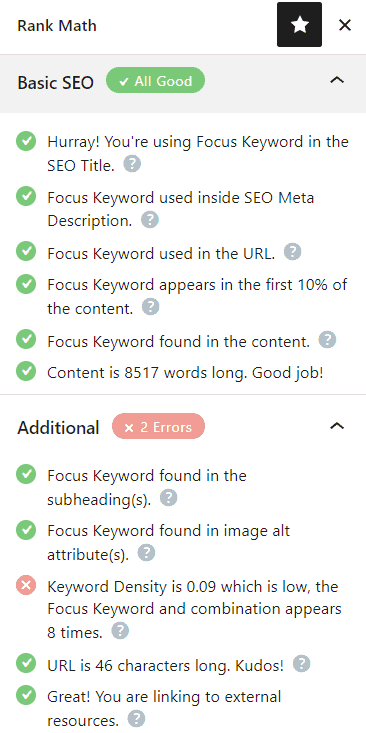
Email Marketing
Another great way to promote your blog post is to email your list and let them know about your latest article. Having an email list will reduce your dependence on Google or social media websites for traffic. You will be able to generate traffic on demand by sending a single email. If you don’t have an email list, now is the time to start building one.

You can use the Thrive Leads plugin to build opt-in forms to collect email addresses. You can then connect the opt-in form to an email marketing service like Active Campaign to send out the emails.
Check out our Email Marketing resources to learn more.
Social Media
You can also promote your blog post on social media websites like Twitter, Facebook, TikTok, and Instagram. Some social media are better than others for different niches. Find out where your audience is hanging out and focus on just that social media.
When sharing your blog post on social media, make sure to:
- Use an attractive image or video
- Write a compelling headline
- Include a call-to-action
Guest blogging
Guest blogging is when you write a blog post for another music blog in your niche. This is a great way to get exposure for your music blog and to build relationships with other music bloggers in your industry.
To guest blog on another website, simply reach out to the website owner and ask if they are interested in publishing one of your articles.
7. Monetize & Make Money
Now that you have started to build an audience for your music blog, it’s time to start thinking about how you can monetize it and make money from your website.
There are many different ways that you can monetize your music blog:
Advertising
One way to monetize your Music blog is to advertise on your website.
You can do this by joining an ad network. Once you have been approved, they will provide you with a code to insert into your website. This code will display relevant ads on your website and you will earn money every time someone clicks on an ad.
To start advertising on your blog, you can sign up for an ad network like Ezoic (they pay more than Google Adsense). When your blog starts getting more than 100,000 page views a month you can monetize with Adthrive.
| Ad Network | Earnings Per 1K Impressions (EPM) | Monthly Traffic Requirement |
|---|---|---|
| Ad Thrive | $13 | 100,000 |
| Ezoic | $3 | 10,000 |
| Media.net | $1 | – |
| Google Adsense | $1 | – |
Affiliate Marketing
Affiliate marketing is when you promote products or services on your website and earn a commission for every sale that you generate.
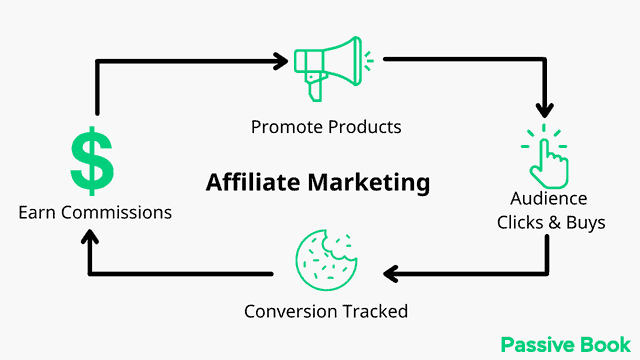
To find affiliate programs, simply search for “your niche + affiliate program” in Google. For example, if you are in the Guitar niche, you could search for “Guitar affiliate program”.
Digital Products
Another great way to monetize your music blog is to sell digital products.
Digital products are anything that can be downloaded and delivered electronically. This could include eBooks, courses, audio files, or anything else that you can think of.
The great thing about selling digital products is that there are no production or shipping costs. Once you have created your product, you can sell it over and over again.
To get started selling digital products, simply create a product that you think your audience would be interested in and then set up a sales page on your website.
You can use Teachable if you want to sell video courses. Your students will have a dedicated course members area and a community system to ask questions and interact with each other. If you only want to sell eBooks, you can use SendOwl which lets you sell your digital products and eBooks for free.
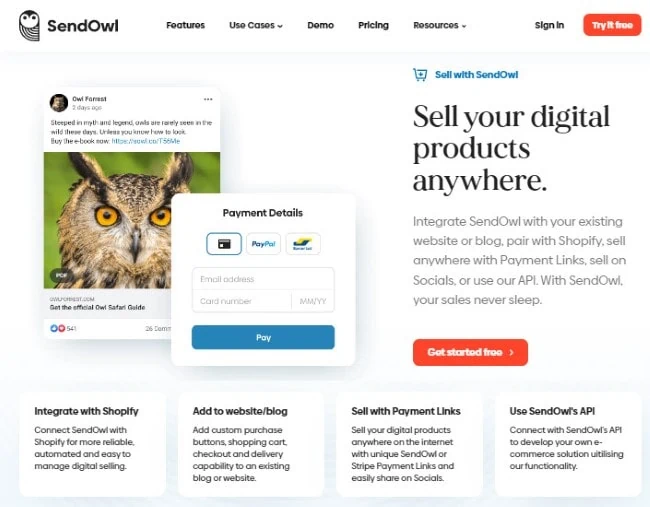
Sell Services
If you are a musician, you can also sell your services on your Music blog.
This could include things like Skype lessons, mentoring, coaching, or anything else that you can think of.
To get started selling services, simply create a service page on your website and list the services that you offer.
FAQ
How do music blogs make money?
There are many different ways that music blogs make money. This includes selling advertising space, affiliate marketing, digital products, and services.
How much traffic does a music blog need to make money?
You can make money with even 5000 visitors if you monetize with affiliate marketing. However, to make serious income with advertising, you need to have at least 30,000 to 100,000 monthly page visitors per month.
Can a music blog make money without ads?
Yes, you can make money from a music blog without ads. This includes affiliate marketing, digital products, and services.
Is it hard to start a new music blog?
No, it’s not hard to start a successful music blog. You can easily get started by following this guide.
How do I monetize my music blog?
There are many ways that you can monetize your music blog. This includes selling advertising space, affiliate marketing, digital products, and services.
What is the best way to monetize my music blog?
The best way to monetize your music blog depends on your specific situation. If you have a large audience, you may want to consider selling advertising space. If you have a smaller audience, you may want to consider affiliate marketing or digital products.
Is it worth starting a music blog in 2021?
Yes, it is definitely worth starting a music blog in 2021. This is because there are several ways that you can monetize your blog and make money online.
Is a music blog profitable?
Yes, a music blog can be profitable if you are willing to put in the work. It takes time to build an audience and to monetize your website but it is definitely possible to make money with a music blog.
What Next?
If you have any questions as you set up your new blog, leave a comment below so we can help you out.
Starting a music blog can be a great way to share your passion for music with the world and to make money online. By following the tips in this guide, you will be well on your way to starting a successful music blog.
Have you started your music blog yet? What type of music blog are you going to start? Let us know in the comments.
Share this post with your friends & followers:
